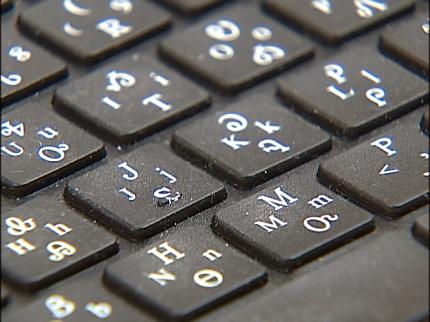
ᎭᎴᎾ ᏗᏓᏴᎳᏛᏍᎩ ᎬᏗ Gmail ᏣᎳᎩ (Get started with Gmail in Cherokee)
Gmail is now available in Cherokee. Apple’s iPhone and iPad apps have supported Cherokee since December 2010. So this Native-American language, spoken by only 8000 oldsters and fading fast, has now crossed the digital divide. The language once spoken the length and breadth of the Great Smoky Mountains is now spoken in the cloud, an essential digital first step for modern language preservation.
After a 2002 survey of the Oklahoma Cherokee population found that no one under 40 spoke conversational Cherokee. Cherokee Nation leadership saw technology as the best way to encourage everyday use of the language by the younger generation.
Cherokee Gmail started after Google engineer Craig Cornelius happened to share a ride with Vance Blackfox, member of the Cherokee Nation. Their conversation eventually got Google and Cherokee language technologists together. “The Gmail team worked closely with their highly organized team of volunteers, which ranged from university students to Durbin Feeling — Cherokee living treasure and author of the Cherokee-English Dictionary. Together, we were able to find and implement the right words for hundreds of Gmail terms, from ‘inbox’ (ᎧᏁᏌᎢᏱ) and ‘sign in’ (ᏕᏣᏙᎥ ᎰᏪᎸᎦ) to ‘spam’ (ᎤᏲᎢ).”
How linguistically appropriate that a bit of friendly conversation could be such a boost to a language in need! For Apple, Cherokee chief Chad Smith actually visited Cupertino and used Cherokee immersion students to pull at the heartstrings of Apple brass to lobby for Cherokee, which is how Cherokee came to the iPhone and iPad.
Black Fox and Smith walk in the footsteps of the great language preservationist Sequoyah (ᏍᏏᏉᏯ Ssiquoya,) who was the first to put Cherokee down on paper.
Sequoyah was born around 1760 in the Overhill country up on the Tennessee. He made his living as a silversmith after a hunting accident left him lame. He never learn to read or write English, but saw the way the Yankees made marks on paper to record their speech. For years he worked with his daughter Ahuoka to create a symbol for each sound of the Cherokee language. After 12 years 86 symbols, each representing unique sound in the Cherokee language. In 1821. After demonstrating the system to tribal elders in 1823, the Cherokee Nation officially adopted Sequoyah’s script.
It is a fine-looking set of characters. Many of the syllabograms created by Sequoia are clearly inspired by English ABC antecedents. But the sounds are strictly Cherokee, and bear no relationship to the original English pronunciation of any look-alike letters.
A beautiful set of characters to transcribe a beautiful language. This Cherokee font set by XenoType closely matches the look and feel of Sequoyah’s original type designs.
In his later years, Sequoyah visited various tribes in a fruitless search for a common speech and grammar among American Indians. He also sought the lost band of Cherokee that had crossed the Mississippi a generation before disappearing into the western mountains. While pursuing this quest in the Mexican Sierras, Sequoyah met his death near San Fernando, Tamaulipas, Mexico in August 1843, language seeker to the last.
I ran a story a few months ago about a young man I know, John David Kurman, who also set out to learn the Cherokee language last summer.
It is a noble effort to preserve this language. A Thanksgiving, “Thank you!” to all of those linguists and language lovers who have gone the extra mile to keep Cherokee in the clouds.
Happy Thanksgiving to you all. Please avoid shopping on Thursday so that everyone can take the day off.
